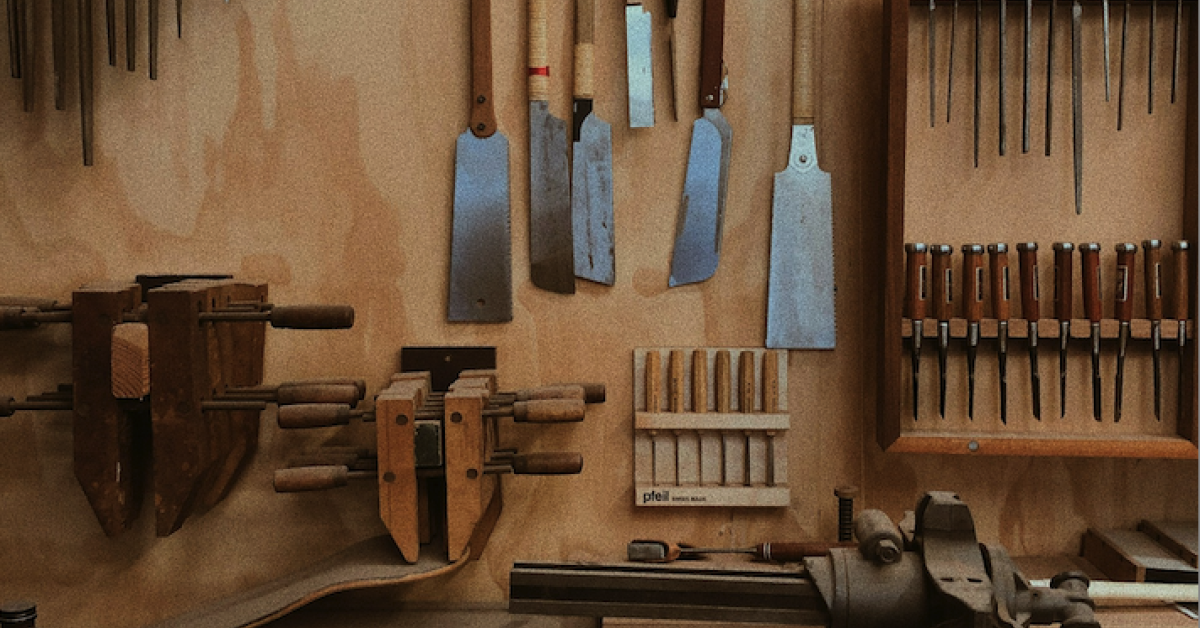10 Essential Tools for Architects to Master Modern Architecture

Traditional hand tools that support architects in crafting detailed models and prototypes — a foundation before digital design takes shape-Elizabeth French-unsplash.com
Architecture has always been about more than drawing lines on paper—it’s about shaping the spaces where life unfolds. Yet to translate bold ideas into real structures, architects need the right instruments. These essential tools for architects go far beyond pencils and rulers. From digital platforms like CAD software and BIM systems to immersive visualization and sustainable design technologies, they form the backbone of modern architectural practice. Let’s explore ten tools every architect should master in order to thrive today.
1. Sketching Supplies: The Foundation of Creativity
Before we jump into advanced digital tools for architects, let’s not forget the timeless value of sketching. A simple pen and sketchbook remain powerful. Many architects start with freehand sketches to capture raw ideas, brainstorm spatial arrangements, or test proportions quickly. Think of sketching as the architect’s native language—a way to communicate thoughts instantly without technical barriers.
2. CAD Software: Precision in Design
CAD software (Computer-Aided Design) is one of the most fundamental essential tools for architects. It allows precise drafting of plans, elevations, and sections. Programs like AutoCAD or DraftSight have become industry standards, offering accuracy that hand drawings can’t match. With CAD, architects streamline workflows, reduce errors, and generate detailed construction documents trusted by engineers and builders.
3. BIM Platforms: Collaboration and Data Integration
Beyond CAD lies BIM platforms such as Autodesk Revit and ArchiCAD. BIM (Building Information Modeling) integrates geometry with data, allowing architects to create intelligent models. For instance, a window isn’t just a shape—it’s linked to material properties, costs, and energy performance. These architectural design tools improve collaboration across teams and ensure that every change is reflected in real time throughout the project.
4. 3D Modeling Software
Tools like Rhino, SketchUp, and Blender give architects the freedom to experiment with form. Complex geometries, organic curves, and futuristic facades are no longer confined to imagination. 3D modeling software also plays a vital role in competitions and concept design phases, letting architects communicate ideas that feel dynamic and bold.
5. Architectural Visualization Tools
Once a model is built, the next challenge is making it look alive. Platforms like Lumion, Enscape, V-Ray, and Twinmotion are architectural visualization tools that allow architects to create photorealistic images, videos, and even VR walk-throughs. These not only impress clients but also help identify design flaws before construction begins. Imagine walking through a digital house and realizing the hallway feels too narrow—that’s the kind of insight visualization delivers.
6. Virtual Reality (VR) and Augmented Reality (AR)
Few essential tools for architects feel as futuristic as VR and AR. With VR headsets, clients can virtually step into a building that hasn’t been built yet. AR, on the other hand, overlays digital models onto real-world settings. Both tools make design discussions more interactive, reduce misunderstandings, and foster client engagement. Picture presenting a new office building by letting a CEO stand inside the virtual lobby—an experience far more compelling than static drawings.
7. Sustainable Design Tools
With sustainability at the heart of modern architecture, tools that evaluate environmental impact are indispensable. Software like Sefaira and Green Building Studio allow architects to test energy efficiency, daylighting, and thermal performance early in the design. These sustainable architecture tools guide architects toward greener choices, reducing costs and environmental footprints.
8. Laser Measuring Devices
No matter how advanced software gets, architects still need accurate site data. Laser measuring devices provide quick, reliable measurements that feed directly into digital models. Instead of spending hours with tape measures, architects can capture site dimensions in minutes—essential for renovations, surveys, and retrofits.
9. Collaboration and Project Management Platforms
Modern architecture is a team sport. Platforms like Trello, Asana, and Slack help architects manage tasks, share files, and maintain communication with engineers, clients, and contractors. Combined with cloud storage like Dropbox or Google Drive, these collaboration tools for architects ensure smoother workflows and fewer misunderstandings.
10. Presentation and Communication Tools
Finally, even the best design needs strong storytelling. Tools like Adobe InDesign, Photoshop, and Illustrator are critical for creating polished presentations, portfolios, and marketing materials. These platforms allow architects to shape not only buildings but also the narrative around their ideas.
Bringing It All Together
Each of these essential tools for architects plays a role in the modern workflow. Sketching captures raw creativity. CAD and BIM ensure precision and collaboration. Visualization and immersive technologies make ideas tangible. Sustainable design software shapes a better future. And communication platforms keep everything moving smoothly. Together, they form a toolkit that blends tradition with technology.
The Future of Architectural Tools
Looking ahead, we’ll see artificial intelligence and cloud-based platforms pushing these tools even further. Imagine software that not only draws walls but suggests layouts based on sustainability goals, or collaboration platforms that allow teams to co-design in real time across continents. The future of architecture will demand adaptability—and mastering these tools is the first step.
Conclusion
The landscape of architecture is changing fast, but the role of essential tools for architects remains the same: to turn visions into reality. Whether you’re just starting out or leading a design firm, these ten tools can make your work more precise, more creative, and more impactful. After all, great architecture isn’t just built—it’s carefully crafted with the right instruments.
So, which of these tools have you mastered, and which ones will you explore next? Dive in, experiment, and let the right tools elevate your designs to new heights.
